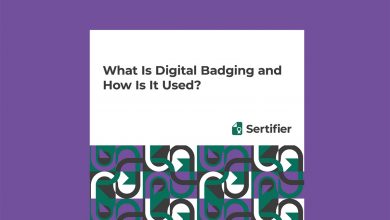Skills Badges: Recognizing Skills
Contents
Traditionally, diplomas and certificates were the primary means of acknowledging one’s skills and qualifications. However, with the advent of digital technology and the rise of online learning platforms, a new form of recognition has emerged: skills badges. Skills badges offer a modern and versatile way to showcase and validate an individual’s skills, creating a visual representation of their accomplishments. In this article, we will explore the concept of skills badges and delve into their significance in recognizing skills.
Versatility in Skill Recognition

In today’s dynamic and rapidly changing world, where the demand for a diverse set of skills is on the rise, recognizing and valuing a wide range of abilities has become essential. Traditional methods of skill recognition often focus on academic achievements or specific domains, but they may not capture the full spectrum of skills that individuals possess. This is where the versatility of skill recognition comes into play.
- Embracing a Multidimensional Skill Set: Versatility in skill recognition involves acknowledging and celebrating a broad array of skills across different disciplines and domains. It goes beyond traditional measures that prioritize academic qualifications or technical expertise. In today’s interconnected and interdisciplinary work environments, individuals often require a mix of technical, interpersonal, and creative skills to thrive. Recognizing and valuing this multidimensional skill set is crucial for fostering innovation, adaptability, and success.
- Technical Skills: Technical skills, such as programming, data analysis, or proficiency in specific software tools, have long been recognized and valued in various industries. Skills badges can be an effective way to showcase and validate these technical skills. For example, a badge can signify proficiency in a programming language, database management, or expertise in using specific software applications. These badges provide tangible evidence of an individual’s capabilities and can be shared online or presented to potential employers, clients, or collaborators.
- Soft Skills: Soft skills, often referred to as “people skills” or “transferable skills,” are becoming increasingly important in today’s workplace. These skills encompass communication, teamwork, leadership, problem-solving, adaptability, and emotional intelligence, among others. Recognizing and validating soft skills through skills badges is valuable in demonstrating an individual’s ability to work effectively with others, navigate complex situations, and contribute to a positive work environment. Badges can indicate successful completion of workshops, training programs, or assessments related to specific soft skills.
- Creative Skills: Creativity and innovation are highly sought-after attributes across industries. Recognizing creative skills through badges allows individuals to showcase their talents and expertise in areas such as graphic design, photography, video editing, content creation, or UX/UI design. Badges can be earned for completing projects, demonstrating proficiency in specific creative tools or techniques, or participating in competitions or exhibitions. These badges not only validate an individual’s creative abilities but also serve as a portfolio of their work, providing a visual representation of their talent and potential.
- Lifelong Learning and Personal Development: Versatility in skill recognition also encompasses acknowledging continuous learning and personal development efforts. As individuals embrace lifelong learning to stay relevant in a rapidly evolving world, digital badges can serve as a testament to their commitment to growth. Badges earned through completing online courses, attending workshops or conferences, or acquiring new knowledge and competencies help individuals track their learning journey, showcase their dedication to self-improvement, and open up new opportunities for personal and professional growth.

Granularity and Microcredentials
In the realm of skill recognition and credentialing, granularity refers to the level of detail and specificity in acknowledging individual skills and accomplishments. Traditional methods of certification often provide a broad validation of overall completion of a program or course. However, with the rise of badges and microcredentials, a more granular approach to skill recognition has emerged, offering a deeper understanding of an individual’s capabilities. Let’s explore the concept of granularity and microcredentials in greater detail.
Breaking Down Learning into Smaller Units

Granularity in skill recognition involves breaking down learning into smaller, manageable units. Rather than receiving a single certification for completing an entire course or program, microcredentials allow individuals to earn recognition for specific skills or achievements within that course or program. These smaller units could include completing modules, projects, assessments, or demonstrating proficiency in specific areas of knowledge or expertise. By recognizing achievements at this granular level, a more comprehensive and nuanced picture of an individual’s capabilities is formed.
A More Comprehensive Skill Profile
Microcredentials enable individuals to showcase their skills and competencies in a more comprehensive and detailed manner. Instead of relying solely on a single certification that may not fully capture the depth and breadth of their abilities, individuals can accumulate a collection of microcredentials that represent specific skills or areas of expertise. These microcredentials can be stacked or combined to form a more holistic and accurate profile of an individual’s skill set, providing a more nuanced understanding of their capabilities to potential employers, collaborators, or clients.
Aligning Skills with Industry Needs
One of the key advantages of granularity and microcredentials is their ability to align with industry-specific needs. Different industries and organizations often have unique skill requirements, and a one-size-fits-all certification may not provide sufficient information about an individual’s suitability for a particular role or project. Microcredentials allow individuals to highlight the specific skills and competencies that are most relevant to a given industry or context, making it easier for employers or clients to identify candidates with the desired capabilities. This alignment between skills and industry needs increases the effectiveness and efficiency of talent acquisition and project staffing processes.



